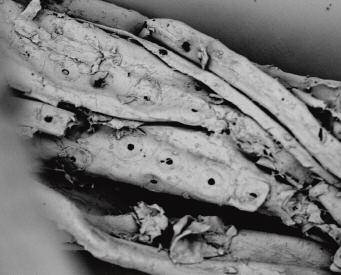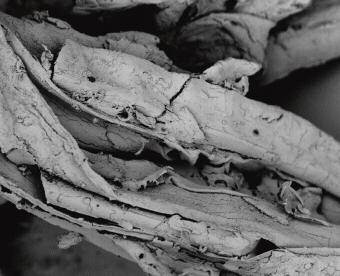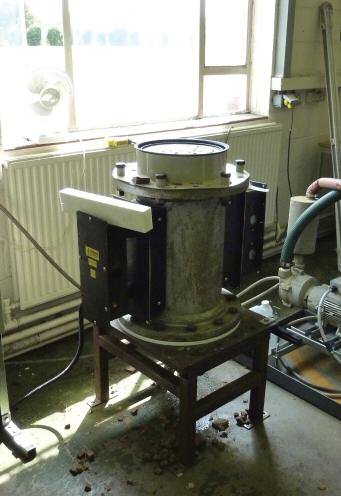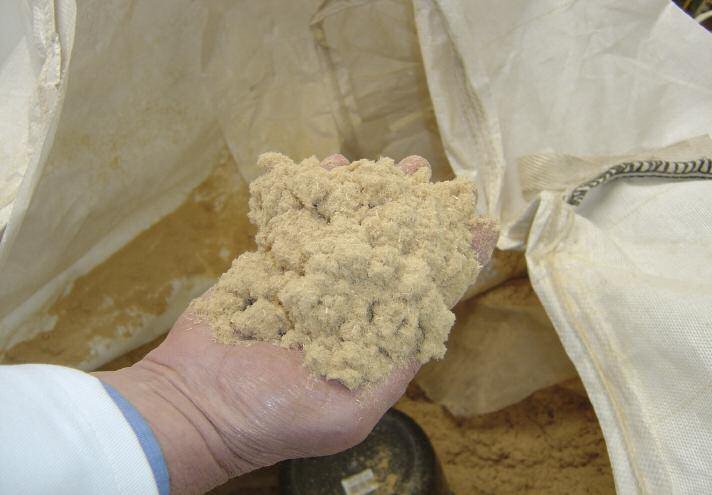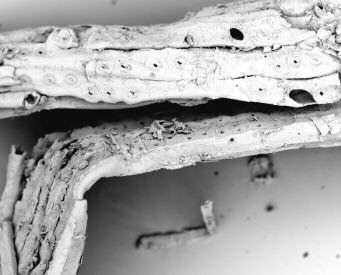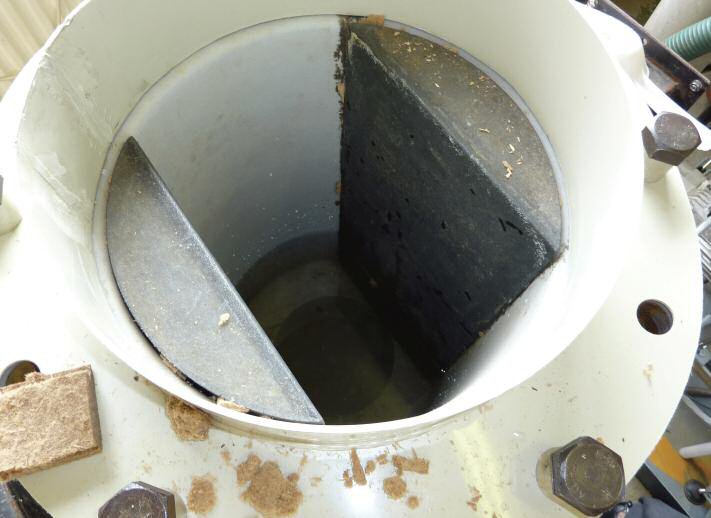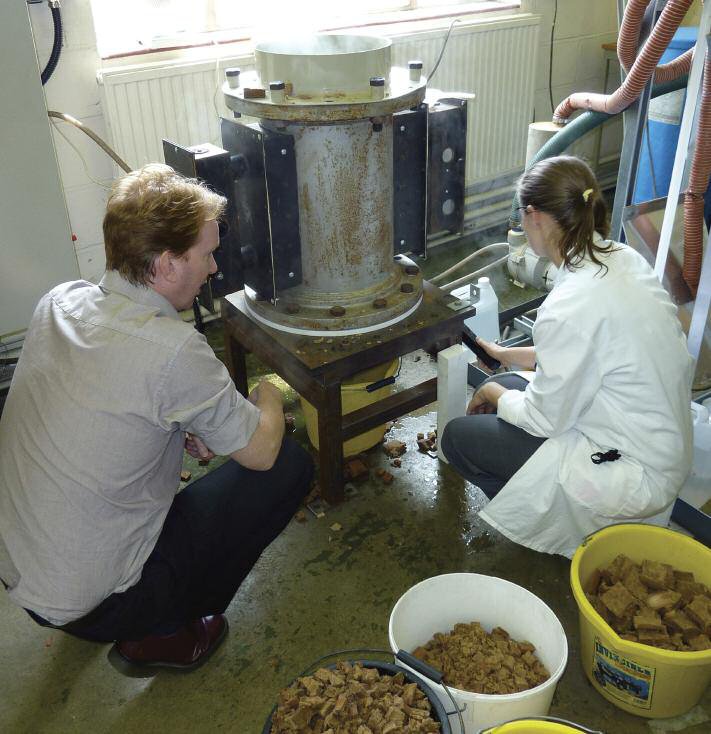Recycling MDF: are we there yet?
9 March 2012The emergence of medium density fibreboard came at a time when function and performance were of greater importance to users than any concern for environmental efficacy or the ready availability of source materials.
The product does what it is supposed to do and it does it very well. Today, however, the impact of biomass for energy on the wood based panel industry is massive; with more wood being diverted to energy production, the panel sector is facing growing competition for its basic raw materials.
MDF is not, however, easy to recycle at the end of its first-use life.
Alternative methods of MDF production have been explored. Over the last 20 years research, in particular at the BioComposites Centre in Wales, has focused on evaluating agricultural fibres such as straw and miscanthus and alternative woody sources such as oil palm empty fruit bunches and fronds and rice husks to produce particleboard and MDF.
However, there are few examples of these technologies being exploited. Perhaps key reasons for this are that there are concerns over supply chains and availability of these alternative materials. Annual crops that would need to be stored, in large quantities, during the year to ensure production on a 24/7 basis is one of the main issues.
In the late 1990s, work in the UK started to investigate the use of recycled wood in particleboard. Norbord, at its Cowie factory in Scotland, set up one of the first facilities dedicated to recycled wood.
A key to the use of this feedstock was the development of efficient cleaning systems. The recycled wood used to manufacture particleboard was a mixture of old particleboard, pallet wood and other off-cuts. This source of wood could contain metal, paint and other contaminants which had to be removed before use.
Since then, there has been a substantial increase in recycled wood use in particleboard. To achieve this, the industry has significantly invested in new equipment and sought to increase the efficiencies of these systems. The use of recycled wood in particleboard has helped considerably in controlling cost and has ensured that particleboard remains a competitive building material. Until now, this was not possible for MDF.
In more recent years, research has started to focus on the use of waste materials for MDF production. Wastes offer some advantages over annual crops, with key features being availability (no need for storage), cost benefits and, in some cases, consistency in quality.
Research funded by WRAP enabled the BioComposites Centre to study the use of waste such as the de-inking sludge from waste paper recycling. This material was available in large quantities and consisted of residual fibres that could be easily recycled back into products like softboard or MDF.
However there was a problem: these sludges were high in moisture – from 100 to 200% on an oven-dry basis. In order to utilize these materials a considerable amount of energy was thus needed in the drying process.
What could be a better alternative for MDF production?
In early 2000 the BioComposites Centre teamed up with the UK’s Furniture Industry Research Association (FIRA) and C-Tech Innovation to look at developing a process to recycle waste MDF back into new MDF panels.
The driver at that time was the high cost of waste disposal for the furniture industry. MDF was not recycled and in many cases was simply sent to landfill. Waste costs at that time for some furniture companies were up to 10% of their turnover, so there was an incentive to look at recycling options.
The project demonstrated that it was possible to recycle waste MDF back into ‘new’ MDF using microwave technology to reprocess the fibres; the key was continuous processing that did not damage the fibres. Work on the project continued until around 2008 when commercial considerations stalled further development.
Over the last five years, the use of wood for energy production has increased. This has had a big impact on the supply of wood for panel production, including MDF. Alternative feedstocks are required to help offset this impact but none really exist and this ongoing market failure highlighted the need for the development of a new process technology to recover value from waste MDF.
In 2009 MDF Recovery Ltd (MDFR) was established to exploit this opportunity and has now patented its novel approach to MDF recycling.
Advances in MDF production methods and equipment continue to be made, allowing for reductions in energy consumption during manufacture. Concerns over formaldehyde have been addressed and new resin systems introduced. The one question that still remains for users is: “How do we cost-effectively recycle waste MDF”?
Craig Bartlett and Jim New formed MDFR with the specific purpose of providing an answer to that question. From their base in northwest England, and with regional UK government support, the pair set about proving their ideas in the laboratory.
By comparing the physical characteristics of waste MDF to feed stocks in other sectors, Mr New believed that the benefits of ohmic heating – high energy efficiency, homogenous heating profile, safe operation – could be applied to the problem of recycling waste MDF.
The question was how to recover fibre from waste MDF cost-effectively?
Clues about how to effectively break down MDF came from the food industry, where ohmic heating has been successfully developed since the 1990s for the heating of aqueous slurries and suspensions.
The technology involves passing an electric current directly through the material, causing its whole bulk to be heated due to its own natural electrical resistance. This enables rapid and uniform heating of both liquids and particulates without the use of hot heat-transfer surfaces and so avoids the creation of damaging ‘hot spots’ in the slurry.
With the help of C-Tech Innovation again, MDFR developed a new way to break down the MDF resins, designing an ohmic heater specifically suited to the recycling of MDF.
C-Tech Innovation has more than 30 years’ experience in providing research and development services to companies, universities and government bodies.
C-Tech was involved in the original development of ohmic heating for food processing and has since developed a range of ohmic heaters for a variety of industrial applications, such as the pasteurisation and hydrolysis of organic waste streams.
The recycling of MDF is achieved by soaking the pre-shredded MDF chips within a liquid medium and then heating to around 90oC. At this temperature the bonding resin is hydrolysed, freeing the wood fibres for effective recovery and re-use.
Once the MDF chips become damp, electric current can flow though them, causing them to heat much more rapidly than would occur through normal heat conduction. In addition, the temperature within the particulates can rise above 100oC, causing the MDF to split and expand, allowing more rapid ingress of water and the rate of hydrolysis to increase. This leads to a high processing rate with minimal water usage and at high efficiency.
Mike Harrison, operations director at C-Tech commented: “The ‘slurry’ of wood chips and water that is formed during MDFR’s process is very similar in consistency to some foodstuffs, and even sewage sludge, that is typically processed using ohmic heating treatments. Bench scale processing at C-Tech’s laboratories in Capenhurst, UK demonstrated that the MDFR technology can recover high quality fibre from waste MDF”.
Independent Validation
Independent fibre analysis from the BioComposites Centre (BC) in Wales has declared the material generated by MDFR’s MDF recycling process to be of a suitable standard for re-integration into new MDF.
The BioComposites Centre (BC) has been at the forefront of research, development and the commercial application of bio-based alternatives to synthetic materials in manufacturing and industry since 1989.
Using its expertise and facilities, the BioComposites Centre has helped MDFR validate the technology based on ohmic heating. Extensive tests and analysis have shown that the recycling process has little impact on fibre quality, with length and width unchanged. Significant benefits of using the recycled fibre include a reduction in process energy as there is no need to refine the fibres: the reclaimed fibres can be ‘injected’ into the MDF manufacturing process after the refiner.
Dr Rob Elias, Director at the BioComposites Centre commented, “There is a huge untapped source of wood that is under-utilised. Using this process, companies can take waste MDF and convert it back into MDF, saving money by avoiding refining costs. To remain competitive, the development of an alternative raw material source for MDF must be a priority”.
Recycling to full scale manufacturing
Following the granting of a patent for MDFR’s recycling technology, the company is now focused on moving towards the construction of a demonstration plant to prove the technology on a larger scale and to show that it is ready for integration into MDF manufacturing. There is considerable interest from the MDF manufacturing sector and discussions with several groups are underway in Europe, South America and Asia.
An investment of £0.6m (US$0.94m) is required for this next phase.
MDF manufacture is an efficient business and many plant managers around the world will declare minimal wastage figures.
However, with such large throughputs and an increasing trend towards shorter runs and a greater number of product types, even low waste ratios can still cost significant sums.
The technology offered by MDFR can be retro-fitted or designed into new plants and offers a simple, robust solution for re-working waste and increasing the yield at an MDF manufacturing facility, says the fledgling company.
In circumstances where local market conditions are conducive, the technology can also process industrial and commercial forms of waste MDF, allowing manufacturers to take back material from their customers – a ‘closed loop’ solution.
Jim New, ceo of MDFR, commented: “Not only is there a strong cost/benefit incentive for MDF manufacturers to adopt MDF recycling into their manufacturing processes, but there is also considerable end-user demand for recycled materials. Major retailers are asking for green materials for their outlets and to comply with their Corporate Social Responsibility agendas. Yet MDF, which is such a vital component of shop fitting, has not fitted the bill – until now”.
Concerning the cost of implementing the MDFR process, Mr New continued, “The core MDFR technology module is the proprietary part of the recovery process, with all the other components sourced in local markets as ‘off-the-shelf’. Consequently, the overall build cost is relatively low, but when built into an MDF line the process has the potential to increase the saleable output from the plant by 2-3%.
“The financial payback on the investment is dependent on the size of the MDF plant. However, in larger plants it is expected to pay back within 18 months”.
These are challenging times for all wood processing industries, with the rise of biomass for energy generation creating severe competition and price pressure within the raw material supply chain.
Technological solutions like this can provide additional sources of secure feed stock at a time when they are most needed and improve the environmental credentials of this most versatile product, says MDFR.
